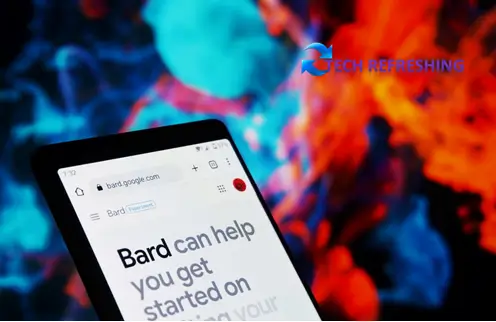Spoken Responses and Image Prompts among the New Features Introduced by Google to Its Bard AI Chatbot, Now Accessible in the EU
In a major update to its popular Bard AI chatbot, Google has introduced exciting new features that enhance user interactions. Among the notable additions are the ability for Bard to provide spoken responses and respond to prompts that include images. Furthermore, Google has expanded Bard’s availability to users in the European Union (EU), marking a significant milestone for the company.
Spoken Responses for Improved Pronunciation and Audio Content
Google has positioned the introduction of spoken responses in Bard as an innovative way to assist users in various contexts. Whether users need help with correct pronunciation, want to listen to a poem or script, or engage with audio content, Bard can now deliver spoken responses. Users simply input a prompt and select the sound icon to access the spoken response feature. Google states that spoken responses are currently available in more than 40 languages, ensuring global accessibility for users around the world.
Image Prompts for Enhanced Interactivity
Building on its showcase at the Google I/O conference in May, the Bard chatbot now supports prompts that include images. For example, users can now seek assistance in crafting a witty caption for a picture featuring two dogs. Initially available in English, this feature will soon expand to support additional languages, making it even more versatile and engaging for users.
Additional Features to Personalize User Experience
Google has introduced various additional functionalities to enhance the Bard AI chatbot, alongside spoken responses and image prompts. Users now have the option to conveniently pin and rename conversations, facilitating easy access and organization of ongoing discussions. Moreover, it is now possible to share responses with friends, allowing users to collaborate or seek opinions on Bard’s output. Another noteworthy update is the inclusion of a feature that enables users to modify the tone and style of the chatbot’s responses, resulting in a more personalized interaction.
Expanded Availability in the EU and Beyond
Initially launched in March, Bard was exclusively available to users in the United States and the United Kingdom. However, Google has been steadily expanding its availability, and it is now accessible to users in the EU as well. Jennifer Rodstrom, a spokesperson for Google, confirmed that Bard is now available in “all countries in the EEA [European Economic Area] and Brazil.” This expansion into the European market is a notable achievement for Google, considering the initial delays caused by privacy concerns.
With these significant updates and expanded availability, Google aims to provide users with a more immersive and inclusive experience with the Bard AI chatbot. Whether it’s correcting pronunciation, engaging with multimedia prompts, or personalizing responses, users can now enjoy an enhanced level of interactivity and convenience. As Google continues to innovate and improve its AI capabilities, Bard remains a powerful tool for users around the world.


